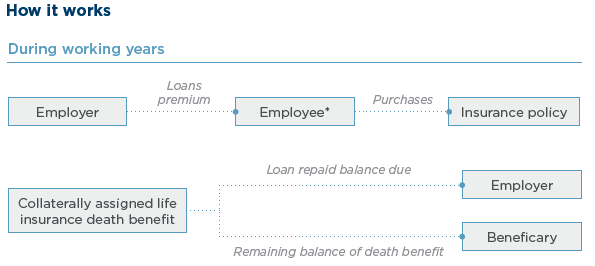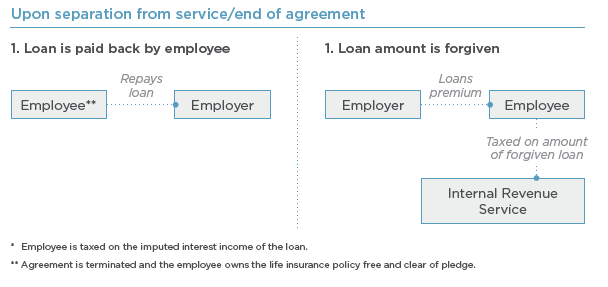TrueNorth Explains the Loan Regime Split Dollar Arrangement
posted by TrueNorth Transportation on Monday, August 13, 2018

The following blog post features content from the Advanced Consulting Group of Nationwide. You can access an unabridged copy of Advanced Marketing Concepts here.
Another dynamic compensation and retention strategy is the Loan Regime Split Dollar arrangement. This plan leverages the unique treatment of life insurance to deliver a significantly tax-advantaged benefit while maintaining an asset on the books of the employer. Let's take a step in and look at the overall concept:
The Concept
An organization assists an employee in acquiring a life insurance policy that is owned by the employee. The employer arranges a loan agreement between the employee and the corporation and the employee uses these borrowed funds to pay the required premiums. The employee then pledges the policy as collateral against the borrowed funds. Any excess death benefit over the loaned amount is directed to the employee’s selected beneficiary.
Benefits to the employee
The employee gets to receive monies from the organization without having to pay income tax on anything other than the minimal interest required by these agreements. This tax-free distribution is then used to purchase a life-insurance policy built for rapid tax-free growth. The employee can access this cash value in a tax-preferred manner through policy loans and tax-free withdrawals.
Benefits to the employer
The employer is able to distribute a benefit to a key employee without removing value from the organization. The loaned-out amount remains on the balance sheet as an asset of the organization. Upon the death of the employee, the organization recaptures the entire amount, making the organization whole.
The terms of the loan can be drafted in such a way that the outstanding amount can become due if certain vesting requirements aren’t met. If the employee doesn’t meet the vesting requirements in the agreement, the company can call the loan, creating a true golden-handcuff for the employer.
Tax considerations
- The employee is taxed on the imputed interest income of the loan.
- If the employee is limited to the death benefit (non-equity collateral agreement), the arrangement is treated like an endorsement split-dollar and the employee is taxed on the economic benefit of the life insurance.
- If the loan is forgiven by the employer, then the outstanding loan amount is taxable as ordinary income.
Steps
- The employer and employee enter into a written split-dollar life insurance agreement.
- The employer creates a loan for the employee for the payment of premiums and the policy is put in place with a collateral assignment in favor of the employer.
- The employee names the beneficiary or beneficiaries of the amount more than the loan.


Learn more from TrueNorth

For more information on loan regime split-dollar agreements, contact Jacob Schulte. Jacob's primary focus at TrueNorth is on developing executive compensation and retention programs for privately-held businesses.
Contact Jacob
About Author
TrueNorth has a team of dedicated transportation staff with deep specialization to each facet in the industry. Our solutions beyond the insurance policy help transportation companies reduce risk in new, innovative ways. Learn more about the solutions we offer here or call us at (800) 798-4080.
... read more about author